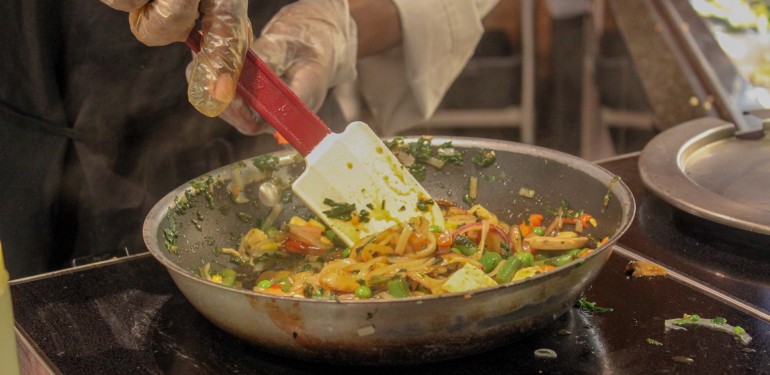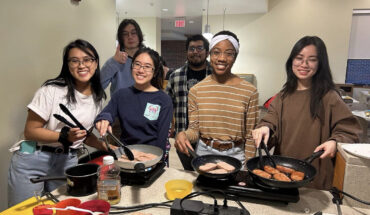As the Mason residential population will be increasingly bound to Anytime Dining meal plans, Mason Dining is working to increase culinary talent at dining halls to match the student need for on-campus food.
This year marked the first year of freshman required to sign up for the Anytime Dining meal plans which require student meal swipes to be used in dining halls. Older students are grandfathered into the older meal plans that can purchase food all over campus with a meal swipe. Fall 2017 will be the first semester that any residential students, freshman through senior, will be required to have Anytime Dining.
Student demand to eat at dining halls should increase as volume of students increase and one way Dining wants to help is to serve higher quality food. Executive Director for campus retail operations Mark Kraner said that Chef Michel Wetli is leading the culinary talent in this effort. Kraner believes allowing chefs more freedom and creativity in their work allows them to harbor their passion and increase culinary quality available to students.
“Chef Amy [at Ike’s], if you eat her taco bar or try her shrimp diablo, it’s tremendous,” Kraner said.
Michel Wetli, General Manager of Campus Dining Operations, said, “allowing our chefs and culinarians to create, they get to utilize their skills. By openly sharing ideas and honest critiquing, we fine tune our offerings.”
Chef creativity is also responsible for the new Jorge’s Mexican-style restaurant at the Johnson Center. Michel Wetli worked directly with a Mason chef to develop its burrito concept.
Chef creativity also fosters unique and diverse eating options at each location.
“Southside has a smoothie bar. If you go to The Globe it has halal meat. Each place has its own specialty,” Kraner said. “Southside will continue to specialize in gluten free and allergy issues.”
Mason is also pursuing environmentally conscious food production with the President’s Park greenhouse, which will have its grand opening on Tuesday, April 21, just one day before Earth Day. Ike’s will soon serve greens grown on campus in the green house.
Dining is adding more healthy food options. For example, the salad bar is intentionally placed at the front of Ike’s to emphasize healthy eating. Southside positions the salad bar past the entrées. According to Kraner, the placement of the salad bar is the reason why Ike’s sells more salad than Southside. There are other healthy options such as flavored water, smaller plates that encourage healthy eating, whole-wheat pizza crust and sugar-free pizza sauce.
There are more plans to increase demand at dining halls. In the near future there will be a campus smoker and gelato machine, according to Kraner. Ikes is also planning to open its doors 24/7 fall 2016. Currently, it’s open from 7 a.m. to 9 p.m. 20% of its meals served on campus are after midnight, according to Kraner.
Mason is looking to corner the residential dining market into the dining halls. According to Kraner, the long lines at the Johnson Center are full of campus residents and turn commuters away from eating on campus. This causes the school to lose money from commuters who say no to a lot of campus dining options.
Mason Dining is using Anytime Dining to require students who live on-campus to eat at dining halls more regularly.
The 2002 University Master Plan projects more residential population growth. Kraner even anticipates more housing in the next five years. He’s found Anytime Dining a cost effective way to reduce the amount of seats needed in dining hall per residential student. Allowing students to eat at any time spreads the peak hours across a larger time and reduces the amount of students eating at once. Kraner said that campus dining halls usually require one seat for every three residential students, but anytime allows him to only have one seat for every four.
Kraner believes anytime dining allows residential students to build more community because students no longer have to budget their meal plans. If a student wants to relax, have coffee, or visit friends who are eating, then it’s included in the meal plan.
“Having residential students eat in the JC was okay as we were growing up, but then what happened was the commuting students looked at those lines and said ‘I can get food on my way home,’” Kraner said. “Financially, the cash customers I needed to pay for the food service in the Johnson center are no longer there. They’re all residential students who are supposed to be paying for this [dining halls].”
Photo Credit: Amy Podraza




